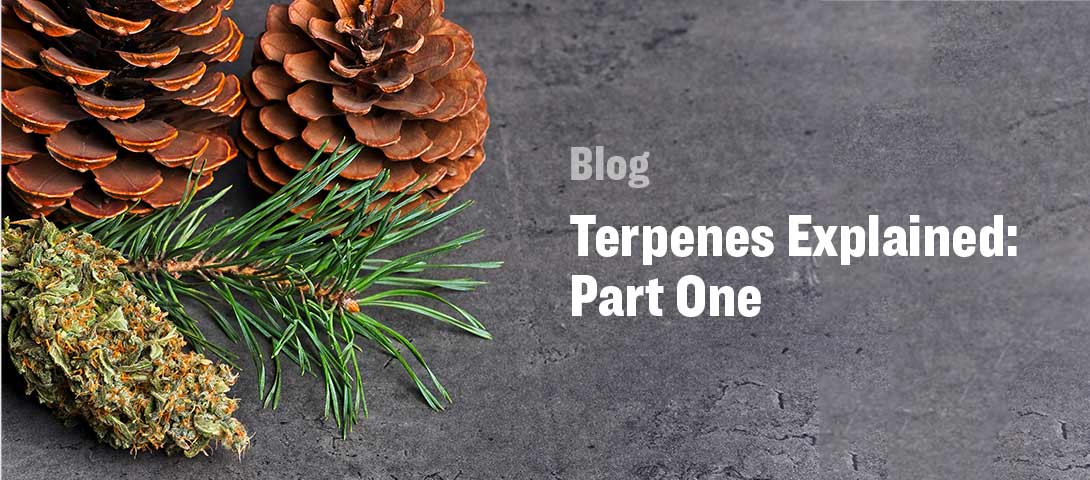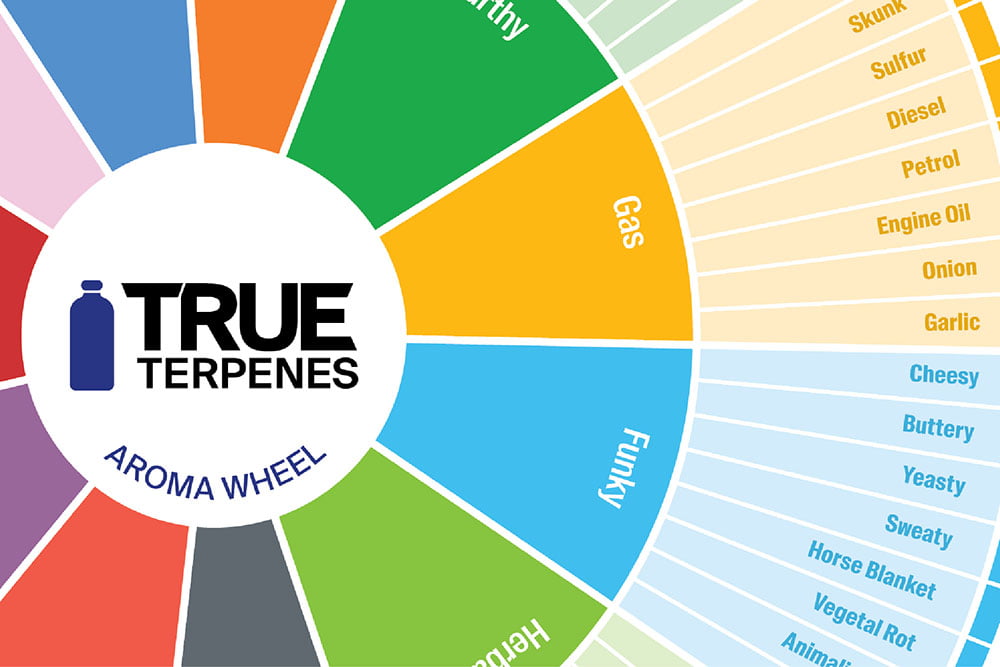August 7, 2018
Terpenes Explained: Part One

See all parts of this series:
Part 1 | Part 2 | Part 3
Whether a connoisseur of cannabis or simply one who appreciates the miracles of the plant world, you’ve likely heard of terpenes. Terpenes are becoming increasingly known in plant science as the critical compounds that provide the aroma, taste, and possible effects of plants.
In this first article of a three-part series, True Terpenes will provide a comprehensive overview of what terpenes are and why they’re important. Part two and three will dive deep into different terpenes and their effects.
Terpenes Defined
So, what are terpenes exactly? Terpenes exist within the essential oils of all plants and are what are responsible for the way plants like cannabis hit the nose, move across the palate, and engage with the body.
The refreshing and energizing feel of pine hitting your nose when you walk through a woodsy forest — that’s the terpene pinene. That zesty scent that you get when cutting into a lemon or lime – that’s the terpene limonene. The calming effects you feel when diffusing lavender essential oils within your home – that’s linalool. Terpenes are all around us.
To put it more scientifically and technically, terpenes encompass a large group of unsaturated hydrocarbons consisting of at least one isoprene unit created by the formation of eight hydrocarbon and five carbon atoms, giving terpenes the chemical structure of C5H8. Terpenes are extremely volatile compounds that evaporate at higher temperatures. Terpenes are essential for a plant’s own protection, especially against pests, but have far greater applications beyond the plant’s growth.
While some within cannabis focus solely on cannabinoids like THC or CBD, terpenes make up the unique traits and characteristics of different cannabis strains or cultivars. It’s estimated that while there are possibly tens of thousands of terpenes in existend, there are at least 120 different terpenes that have been found in cannabis. The “terpene profile” of a particular cultivar describes the combination of terpenes present within. As more is learned about terpenes, terpene health benefits are becoming important within the medical applications of cannabis.
How Terpenes Work
While more recent research has explored terpenes and their effects, terpenes have been used in medicinal contexts dating back to Ancient Egypt. It wasn’t until the early-to-mid-1800s that more clinical research on terpenes began to emerge.
Terpenes are closely tied to the practice of aromatherapy or using scent to bring about certain effects. The olfactory bulb within our nasal cavity is connected to emotion, which is why certain scents may stimulate certain feelings like calming or energizing.
It’s also theorized that terpenes bind to the same receptors as cannabinoids do within the body and brain through The Endocannabinoid System (ECS), which is responsible for regulating all bodily systems and bringing the body into balance, or homeostasis.
Common Terpenes
In parts two and three of this article series, we will break down six different terpenes within cannabis that True Terpenes offers in their isolated form.
Here is a brief list of terpenes found in cannabis:
- Myrcene
- Limonene
- Linalool
- Beta-caryophyllene
- Alpha-Pinene
- Eucalyptol
- Humulene
- Terpinolene
- Nerolidol
- Alpha-bisabol
- Camphene
- Borneol
Read the second article in this series, where we break down the three most abundant terpenes in cannabis: myrcene, limonene, and linalool, and the third part, where we delve deeper into beta-caryophyllene, alpha-pinene, and eucalyptol, while talking about the importance of terpene profiles.
Natural Terpenes Available from True Terpenes
True Terpenes is a leader in providing various markets access to isolated botanical terpenes that have been inspired by yet derived from plants other than cannabis. We empower people to feel precisely how they want to feel.
Our terpene products are created in a cGMP facility and are certified non-GMO, food-grade, organic, and natural.
These isolated terpenes that can also be found in various terpene blends informed by Dr. Ethan Russo’s Terpology® can be added to various household products, personal care, and beauty products, cannabis extracts, and food and beverages.




